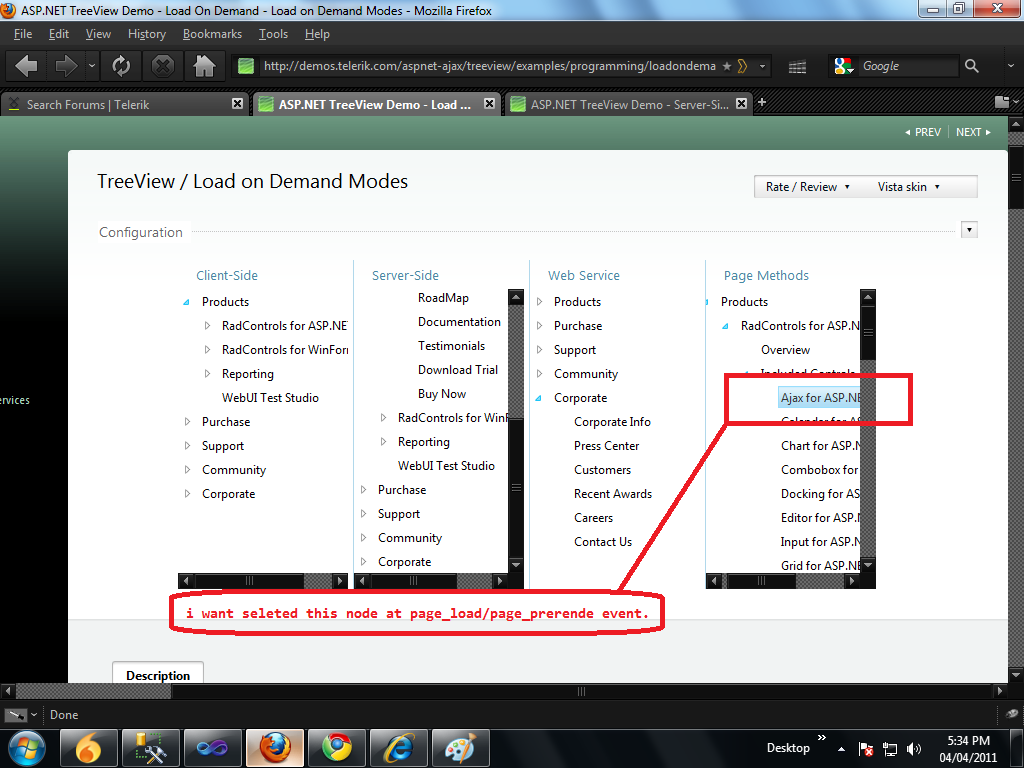
List newSource = source.Where(a => a.ParentMenuID.Equals(parentID)).ToList() Private void CreateTreeView(List source, int parentID, TreeNode parentNode) Using (MyDatabaseEntities dc = new MyDatabaseEntities()) Protected void Page_Load(object sender, EventArgs e)
ASP.NET TREEVIEW EXAMPLES CODE
Write the followings code in your page load event. Go to Solution Explorer > Right Click on Project name form Solution Explorer > Add > New item > Select web form/ web form using master page under Web > Enter page name > Add. Here's an PropertyĪ TreeView for ASP.Go to Solution Explorer > Right Click on Project name form Solution Explorer > Add > New item > Select ADO.net Entity Data Model under data > Enter model name > Add.Ī popup window will come (Entity Data Model Wizard) > Select Generate from database > Next >Ĭhose your data connection > select your database > next > Select tables > enter Model Namespace > Finish. In the HTMLHelper, set the OnClientFormatItem and pass the name of the client function to it. The event handler parameters include the element that represents the node and the data item being rendered. You can customize the content of the TreeView nodes using the formatItem event. When items are checked or unchecked, the checkedItemsChanged event is raised, and the checkedItems property is updated with a list of currently-checked items.

Here's an example that uses the OnClientItemClicked Propertyĭocument.getElementById('tvNavItem').innerHTML = 'Navigating to ** *** ' + + ' check boxes are displayed, the treeview manages its hierarchy so that when a check box is checked or cleared, the new value is automatically applied to all child nodes and reflected on the parent nodes' state. Their only difference is OnClientSelectedItemChanged occurs when the user moves the selection with the keyboard, while OnClientItemClicked occurs when the user clicks an item or presses the Enter key. You can use the OnClientSelectedItemChanged or the OnClientItemClicked event for navigation. The simplest and most common use for the TreeView control is navigation.

ASP.NET TREEVIEW EXAMPLES FULL
The full client API is included in the documentation. You can use the client API similarly to ASP.NET MVC's other controls (read about it here). While working with TreeView, you would often need to work with the control's client APIs. Var list = EmployeeEx.GetEmployees(leaderID) Public ActionResult LazyLoading(TreeNode node) Return View(EmployeeEx.GetEmployees(null)) The following examples use the Northwind Employee class: Controller: Otherwise, you can let the field to be null. If the child node has children, you can set an empty array to the field, and the field's name will be used for the ChildItemsPath property. In the Bind property, set the second parameter to lazyLoadActionUrl and provide a URL to obtain the node's data on demand. The TreeView control makes lazy-loading super easy. Lazy loading is useful when you're dealing with large hierarchical data sources and want to avoid the delays involved in loading an entire data set at once. You can customize this behavior by handling the TreeView drag/drop On Demand When dragging is allowed, users can drag any node to any position within the tree. To further control editing, use the client methods OnClientNodeEditStarting, OnClientNodeEditStarted, OnClientNodeEditEnding, and & DropĪllow users to drag nodes to new positions within the treeview by setting the AllowDragging property to true.

Edits made to a node's content are automatically propagated to the source collection for the field associated with DisplayMemberPath. TreeView Images EditingĪllow users to edit nodes by setting the IsReadOnly property to false. You can customize each node to display both images and text by setting the ImageMemberPath property to the image path. Set the ShowCheckBoxes property to true to display check boxes. Set the ChildItemsPath property to the collection of child nodes with the following Check Boxesĭisplaying check boxes against each node is as simple as setting a property. The DisplayMemberPath property is set to the text to be displayed in the tree nodes. Each item in the source collection has information about nodes and a collection of child nodes.

New Property ,īecause the Bind property takes an IEnumerable source, you can data bind TreeView to create trees. Image = "/Content/images/electronics.png", Public static Property GetData(string val) TreeView We'll use the following model class for most of this blog because it returns an array with hierarchical data: Use TreeView to display the headings in a document, the entries in an index, the files and directories on a disk, or any other kind of information that would be best displayed as a hierarchy.


 0 kommentar(er)
0 kommentar(er)
